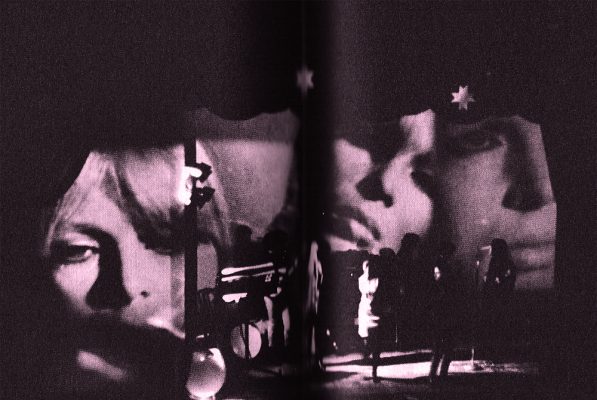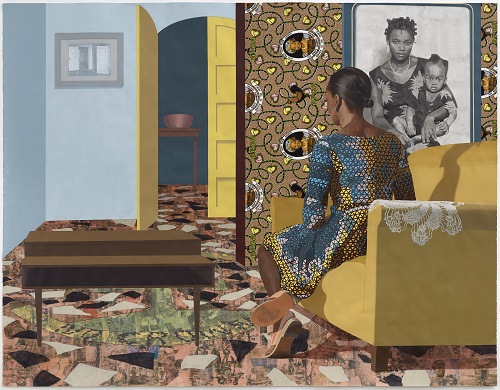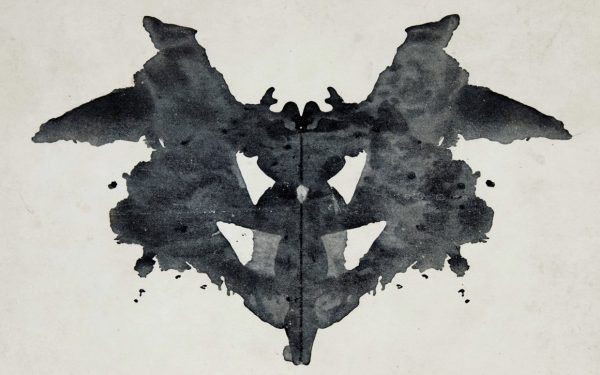Claire Bishop. Everywhere I go, some curator or artist wants to be rid of this turbulent critic.
In 2006 Claire Bishop tolled the death knell for participatory art [1]; now, in a recent Artforumpiece [2], she upbraids contemporary art for its categorical failure to respond to the all-pervasive digital revolution of the last twenty years. While many artists use digital media – take Christian Marclay’s video The Clock (2010) – Bishop is adamant that this merely cashes in on the digital aesthetic and fails to address the issues of the emergent digital world in any meaningful way. If contemporary art can’t even keep up with the internet, it can have no claim on its definitional adjective.
It is not Bishop’s criticism of the Biennale crowd-pleasers like Marclay that is particularly inflammatory, but the exclusion of an entire sphere of new media art from her inquiry. She writes, ‘There is, of course, an entire sphere of ‘new media’ art, but this is a specialised field of its own: it rarely overlaps with the mainstream art world [commercial galleries, the Turner Prize, national pavilions at Venice]. While this split is itself undoubtedly symptomatic, the mainstream art world and its response to the digital are the focus of this essay.’
Perhaps Bishop’s sweeping decision to sideline all ‘new media’ production might be attributed to more localised issues concerning arts funding – in Europe where art is supported by public funding, digital art is certainly more mainstream than in the gallery-driven USA or UK. But still, Bishop’s decision is paradoxical: she complains that contemporary art does not address the digital, and then passes over precisely that which aims to do so. Therefore Bishop’s strange omission made me look forward to transmediale 2013 with a renewed interest. If the digital revolution, as Bishop implies, is indeed the defining feature of our times, then might the creative production on the digital periphery redefine our basic terms of reference for thinking about contemporary art?
transmediale, the younger sibling of the more famous Berlinale, started off as a video art festival in 1988. It still showcases a remarkable short film programme, and runs in collaboration with the electronic music festival entitled Club transmediale. transmediale’s central focus, however, has become new media arts; among new media festivals it is second in size only to Linz’s Ars Electronica. This piece will not attempt an overview of the festival, so much as use it as a testing ground for Bishop’s argument. transmediale provides a window into that ‘specialised’ culture that Bishop ignores. The results will be mixed.
***
There was an atmosphere of exhaustion at the festival, a feeling that the golden era of digital culture had come to an end. The theme was expressed by the acronym BWPWAP. I’m told that on Internet forums this stands for ‘Back When Pluto Was a Planet’. A slang designator for any obsolete technology of the recent past: floppy disks, VCR, AltaVista search engine, ICQ, blue underlined hyperlinks, overhead projectors. All of that is BWPWAP.
In 2006, in the face of the discovery that Pluto is merely one of very many similar objects somewhere beyond Neptune and smaller than our Moon, the solar system’s ninth planet was reclassified as a ‘dwarf planet’ or ‘plutoid’. The theme of Pluto’s demotion, presumably, was intended to open up further lines of enquiry and debate: the intersections between art and Internet culture, the nature of artistic endeavour in the age of rapidly aging digital media, the clash between scientific classifications and artistic interpretations. The large part of the soul-searching inspired by this multiplicity of themes produced results that were somewhat bizarre.
The feeling of the festival was defined by a space age retro aesthetic. The main exhibition space was dominated by a communication network of giant pneumatic tubing and sculptures created by obsolete technologies gave the impression of some kind of Oompa-Loompa land: technologically advanced but strangely unfamiliar. The conference programme chiefly bemoaned the passing of the amateurish times of Web 1.0 and shook a High Theoretical fist at its corporation-led successor. The enigmatic artistic director periodically emerged from the wings with a cryptic comment about the weather conditions on Pluto, like some enchanted, stargazing Willy Wonka. The most accessible talk was given by Ian Hacking, a thundering Canadian philosopher, whose keynote speech compared the story of Pluto with the impending declassification of Asperger’s Syndrome as an illness. Some taxonomies, Hacking contended, make a difference to human life, and others do not.
Hacking’s talk aside, one would be forgiven for agreeing with Bishop’s description of the new media scene as overly specialised: a closed circuit running on its own brand of academese. But what about the art itself? What would it mean for art to ‘really confront the question of what it means to think, see, and filter affect through the digital?’ Bishop, concentrating as she does on the mainstream, gives no answer. And answers are manifold. Following Hacking’s cue, let me attempt something of a taxonomy. I propose this: we may divide up digital art between the political and aesthetic domains, and divide that duality across into art that appropriates and art that counters the dominant digital culture. The result is four categories of artistic production that might relay between the digital periphery and Bishop’s definition of ‘the mainstream’.
***
At the political and countercultural end, we have ‘glitch art’. To judge by transmediale, this has not yet disappeared. For one of the festival’s official selections, entitled Tools of Distorted Creativity, the curator Jacob Lillemose imagines what it would be like to employ digital tools with subversive intent. The results include gestures such as software rendered useless by a corruption of the code (Adrian Ward, Signwave Auto-Illustrator, 2000-2002), a Microsoft Word suicide letter template (Olga Goriunova, Suicide Letter Wizard for Microsoft Word, 2000/2013), and a GPS app which visually represents the digital noise generated by satellites (Katy Connor, Pure Flow, 2013). Glitching, it seems, might have been effective in the Nineties, when these technologies were new and their unlicensed uses surprising. Now, more often than not, it falls flat.
In the opposite corner we have art we might call ‘avant-retard’, a term coined by the British artist People Like Us. This art does not try to counter the predominant uses of the digital but rather revels in its aesthetic disorientation. With a finger forever on the pulse of YouTube meme factory, it appropriates and reconfigures the inane entertainment of the ADD generation. The exhibition In That Weird Age, hosted by the spin-off music festival Club transmediale, took the lead in this genre. It included a meticulously curated exhibition of trending YouTube videos, displayed alongside fine art works, the distinctions between the two often blurring and breaking down. In Tabor Robak’s installation Explosions (2010), we lie down on a comfy bed while CGI explosions pound us relentlessly for as long as we can take it. Jennifer Chan’s videos – exhibited in the Canadian embassy programme – or Ryan Trecartin’s provide further good examples. The challenge for ‘avant-retard’, of course, is to rise above the stupidity it appropriates.
The third category is that of art that appropriates the strategies made available by the digital technologies but turns against the dominant political orders that spawn them. The beginnings of this might be seen in so-called ‘hacktivism’ and .net art. A notable example can be found in the art collective etoy’s 1994 attack on a toy corporation with a similar name. Judging by the exhibition Tools for the Next Revolutionat the Substitut gallery, hactivism has entered the next phase of evolution. The artist duo Wachter and Judd create platforms that allow users to bypass censorship operations in China and Iran or allow tweeting revolutionaries to stay online during Internet blackouts. Clickable screen-captures are used to escape word-sensitive censorship searches. These projects are ingenious and appear to be effective even if the absence of an aesthetic dimension will continue to puzzle art theorists for some time to come.
Finally, there are works that are aesthetic but counteract the dominant uses of technology with creative alternatives. The Berlin space LEAP is a key proponent of this, showcasing works such as such as David Bowen’s Tele-Present Windand Verena Friedrich’s Transducers. The first work uses sensors to record the wind speed in Minnesota and then transmits this in real time to a field of dried stalks in the gallery, allowing the wind an elegiac effect at a distance of 8,000 kilometers. The second work translates the unique chemical composition of individual human hairs to create hauntingly different sounds. There is a crackling poetic quality to these works; a conceptual beauty that one hopes would survive the inevitable obsolesence of the technologies on which it is based.
Bishop is right to berate the mainstream for its failure to allow prominence and recognition to the digital artwork and there is a partial truth in her relegation of this work to a niche and somewhat isolated area of interest – Jennifer Chan’s videos are more meaningful to the subculture of 4chan users than to those of us who pay little attention to Internet forums. As with any art form, there exists mediocrity as well as potential. And the hard truth is that digital art will only ever represent a miniscule proportion of the overall digital culture. However, one should keep an eye on transmediale. As our lives become increasingly virtual, the need for an art that critiques or even prototypes that new mode of being will become ever more pressing. To find this, the theorists will need to look beyond the gallery mainstream.
[1] Claire Bishop, ‘The Social Turn: Collaboration and Its Discontents’, Artforum, February 2006.
[2] Claire Bishop, ‘Digital Divides’, Artforum, September 2012.




